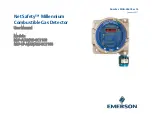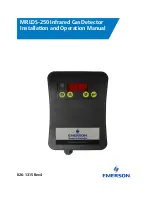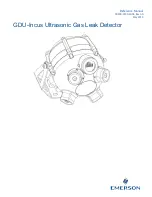
E2610-LEL
Rev 10.05.2021
Installation guidelines
There are no precise rules or standards to follow when installing gas detectors. The
following points must be taken into account:
●
Application (the instrument is intended for leakage control.)
●
Properties of the space under investigation (room geometry, direction, and
velocity of airflows, etc.),
●
For gases lighter than air install the sensor higher than the potential
leakage/generation source or near the ceiling. Combustible gases lighter than air
are hydrogen, methane, and acetylene. Propane and butane are heavier than air
and tend to sink. It is recommended to place the sensor lower than potential
leakage or generation source.
●
The device should be accessible for maintenance and repair.
The aforementioned conditions above will affect the coverage area of the device. however,
the coverage area for a detector is usually between 2.5 to 5 meters radius.
For early leakage detection install the sensor as close as possible to the potential leakage
sources (flanges, valves, pressure reducers, pumps, etc.), taking into consideration other
points listed above.
For general area monitoring without definite leakage sources, the detector should be
distributed evenly in the room.
Do not locate the detector close to ventilation openings and strong air currents. Avoid the
areas without air circulation (corners, niches) as well.
For personal safety control, the detectors are installed in the breathing zone (at the height
of the head of people or animals). The recommended sensor position is vertical, pointing
downwards.
10

































